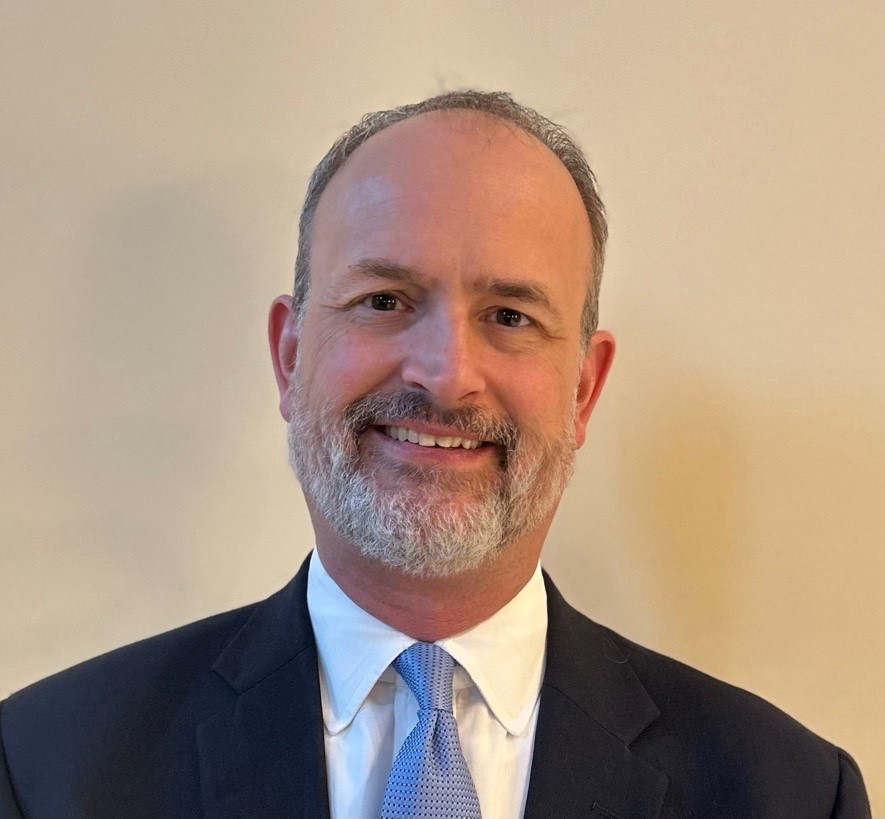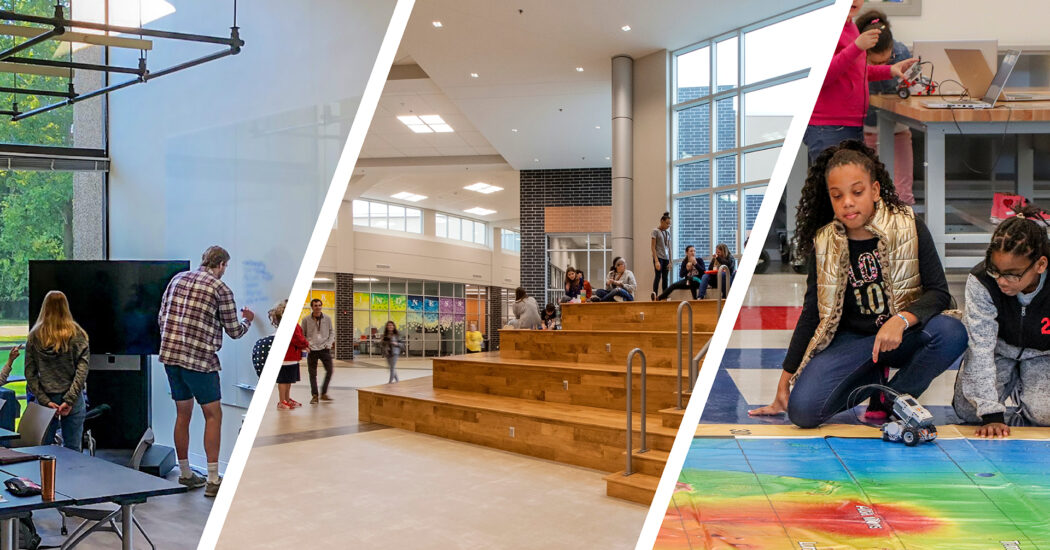The Business of K-12 Education: A Conversation with LaPorte Community School Corporation’s Greg Hunt, Ed.S.
-
Category
Studio-K12, Leadership -
Posted By
Schmidt Associates -
Posted On
Mar 12, 2024

An advocate for prudent education management, fiduciary responsibility, curriculum development, team building, public speaking and capital improvement projects that benefit students, educators and the community, LaPorte Community School Corporation Assistant Superintendent of Business and Operations, Greg Hunt, has made a name for himself in the district and the K-12 education community. Starting as a high school business teacher, Hunt’s experience includes stops as an administrative assistant, an assistant principal, and a principal. Today, he is overseeing some of the district’s most lofty goals, including work on equity, equality, and well-being. To get a first-rate education about his efforts and outstanding career with LaPorte Community School Corporation, we asked him for a lesson. Follow along for yours.
How did you end up at LaPorte Community School Corporation?
I graduated from Indiana Wesleyan University in 1995 with a marketing and management degree, so I was not always in education. My parents were both educators. My grandmother was an educator, so I would be the third generation as a teacher. But I chose to go the way of business and started in sales when I graduated. I found my way back to my hometown, which is Plymouth, Ind. At that point, I was contacted by my principal at the time and asked if I would be willing to be an instructional assistant in the then ESL program until they found a replacement. I accepted. I got involved with the students and was able to coach that year as well. In fact, it ended up being an entire year. I decided to go back to school to become a teacher. I was attended Ball State University to get my teaching license in business education. I then got a job at LaPorte Community School Corporation in 2000. That is a condensed version of what happened, but I am thrilled with the path I took.
Who were some of the educational leaders who influenced you, and what did you learn from them?
One is my father. Sometimes, your parents are your biggest advocates or your idols, but he was mine. He was a man of integrity. He was a man of character. Other teachers were always asking him questions. He modeled that for me. My baseball coach at Plymouth was another. He was a driven, but he cared. I knew that he wanted the best for me, even though that he was tough. There are other individuals who have come my way as far as model instructors. I think about one of the assistant principals at the high school. When I started, he was a model as far as administration and leaders are concerned from both the instructional and leadership side and working with the number of administrators and teachers within the building. That set the tone for me.
With 11 schools, different programs and over 500 educators who are ranked effective or highly effective, what do you attribute that to, and how does the district help teachers become effective?
By providing our staff with what they need as best that we can, whether through encouragement, instructional supplies, technology, or the physical building. Whatever we can do to help them to be the best they can be is going to then lead over to our students. Students thrive with that type of instruction and leadership. Professional development plays a crucial role in that as well as what may need to be implemented. That comes from communication and having open dialogue.
You have a multicultural district. How does the district look at addressing the varying needs of each student group and how do you help them succeed?
That is an ongoing discussion. It comes from meetings with staff, principals and directors. We have weekly meetings with our directors and principals, not as a group, but individually to determine what those needs are in each building. Every building is different, especially our elementaries. The eight elementaries have unique cultures with specific needs. We must look at each of those schools and then come together to devise strategies. It is one of the biggest areas that we have improved upon. We are one of five members of a special education cooperative in LaPorte. We house intensive programs, which includes our life skills, emotionally disabled, and our special education preschool programs. To meet those challenges, we work collectively with not only our special education staff, but also our general education staff to make sure those students’ needs are met because there’s socio-economic diversity, which is so unique to our corporation. We have a very affluent population, but we also have a very needy population. We can learn from one another and that is beneficial for our kids and a big credit to our staff to be able to bring it together.
What data do you use to make decisions about programming, culture, and the direction of the different schools?
There are state requirements, but there also are personal benefits and hindrances that I have with an education background and now dealing with the fiduciary responsibilities of a corporation. That is a disadvantage because I know what the needs are. I have been in the place of the teachers and principals. Sometimes, you must figure out ways to make things work. They may not work that the way that you want them to, based on the finances, but as a collaborative group with our administrative team and our central office, I rely heavily on the assistant superintendent of elementary education, the assistant superintendent of a secondary education and the superintendent working together, as well as our assistant superintendent of special education to meet on Monday mornings to plan the week and strategize what needs to happen. Through those conversations, I look and say, ‘okay, these are the needs, and this is how we’re going to move forward.’ Sometimes I say no, unfortunately, but those are my responsibilities. So, I look at the data. We look at our testing data to see what those needs are and not spend dollars on areas where we are striving or succeeding, and we look specifically at targeted areas of need based upon what type of data we are getting. I will use those information points to move forward.
Something interesting about your district is you have a statement of beliefs and four varying pillars. How does the district uphold each domain and make them work in relation to each other?
The domains are what drives everything. Every decision is based on the four domains. So, in any meetings that we have with our administrators, those four domains are discussed. We are constantly looking at safety and looking at data we can we pull as we consider what needs to be done in the corporation, whether that’s emotional, safety or physical. We are always thinking about what we can implement and start to plan. Viable curriculum is a huge push for us, and it goes back to everything that we do. So, if we are going from one school or elementary building that we can understand that through our guaranteed and viable curriculum, that those things are going to be taught in the elementary school. As with everything that we do, those are just two brief examples, but they show how we use the four domains to drive every decsion.
There has been district-wide transformation in LaPorte Community School Corporation. Can you share more on the feasibility study and referendum and rethinking your facilities, including their relationship to the community?
I started in June in 2013, so I had a year into it, and then our current superintendent was able to take the helm in 2014. This is when it began. We started with a feasibility study looking at ways to improve our programming. We knew there was debt dropping off and we were going to take on projects. But we did not want to take on those projects without programs that drive student focus. In 2014 and 2015, we produced concepts of things that needed to be done. One was an elementary building. We knew that we had an emotionally disabled program at one of our elementaries where the classrooms were not conducive. So, we knew that when we were building a new elementary school that we needed to focus on that that area of improvement. We also knew with our community being heavily involved with the arts, that a performing arts center would come to the forefront. We have great drama and music programs with choir and band, so we highlighted that. We had an auditorium that was outdated, and it was not conducive to the needs of students. Then we had a middle school that needed improvement. Through the feasibility study, we figured out that those were needs we had. Initially, we started with the middle school. We had two middle schools, Boston Middle School, and Kesling Middle School. We knew that Boston needed improvement, but the space was limited. The traffic flow in the middle of town was not conducive to safety for travelers or students. We looked for other property and could not find anything, but we looked at how we were going to benefit all students at both middle schools. We produced the concept of combining the middle schools with the understanding that our elementary schools were lacking in space. That was when we planned building one middle school that had the property to assist students, their needs, the education experience, and offerings. Of course, in the performing arts center, we were excited because that was one where we did everything within the shell of the auditorium. Although we scratched our heads and said, ‘how is this possible?’ To have it be rotated 180 degrees and able to provide a fly space and a new stage was great. The new elementary school was beyond an improvement. The beauty of this was we did it without a referendum. We had debt dropping off, so we took on $86M worth of bonds without neutralizing that tax rate, not penalizing our taxpayers, and completing the work, which was exciting.
You oversaw the Kesling Intermediate Campus project and were recognized for that. What did that recognition mean to you and the community outreach conversations you have had?
Because you had two distinct schools with their own identities, it was not going to be easy to bring them together. But what helped us through all of this was the collaboration with teachers at both middle schools. I remember Schmidt Associates Principal Tom Neff overseeing this project through. He said, ‘if you were to create a brand-new building to meet your needs, what would you do?’ Being able to take those concepts, put them on boards and come back to create a design for the campus was thrilling. Through collaborative work, it offered buy-in and ownership. It was a first-of-its-kind concept that opened the doors to have students and staff come in to walk the halls and find their classrooms. One of the things that I am proud about is being recognized by ASBO International, which is the Association of School Business Officials International. I was recognized in 2021 for a Pinnacle of Achievement award. As I step back and think about that, it was huge being able to be recognized by my organization because Kesling was not just about the middle school; it was about everything fitting together. We were able to take these projects and made a difference through opportunities. The old Boston Middle School became our central office, which also houses our family advocate center. We have our special education preschool there, which was at the high school before. We have our special education offices there. We have a virtual learning academy there. That opened our former central office, which became our technology lab, food service, and maintenance offices. We were able to take the property we had to make a land swap. We acquired property for a new transportation garage. But the special education offices and preschool moving out allowed us to have additional space for career readiness programs at our high school. It all came together, and it was neat to see how one project made a difference in the corporation.
What was it like collaborating with the public?
That is where the communication happened. The reasoning behind it was what drove the public to accept things. The idea was the transition between elementary and middle school, which was just 6th, 7th, and 8th, so there was no transition. It was a self-contained classroom in fifth grade and then going into 6th grade and having multiple teachers. You are walking the halls and learning combinations. That is a lot for a 6th grader. So, the idea was to have an elementary building for 5th grade with two teachers being able to be with those students constantly, but having them introduced to the school, the cafeteria, the library, and the gym areas that are shared spaces. Then you start transitioning into 6th grade with more freedom and familiarity. That was big for us to explain to the community and parents. And that leads us into the 7th and 8th and the ability to bring both those middle schools together. More elective classes could be taken, and teachers could be shared. That would not have happened if we had the two middle schools. The parents’ understanding of the career pathways and leading students through the experience was another selling point.
If you look back to the beginning of your career at LaPorte Community School Corporation, and you could do it all over again, is there something you would have done differently?
From the building standpoint, there might have been things I may have tweaked, but not with the concepts. I understand and appreciate this. There are administrators that never stay in the same corporation to work in different capacities. I have been thrilled to be able to do that. For me, I do not believe there is anything. I am just thrilled to be able to do what I have been able to.
You have seen changes in education that have been good and bad, as well as times of crisis. How do you reassure education majors that they made good choices?
It is a wonderful opportunity for teachers right now. There are opportunities available. Sure, the landscape has changed. It used to be that teachers were scrapping to find a position and now they are afforded opportunities to be more selective. It is a wonderful opportunity now, especially with seeing students coming in with different experiences. Technology has also played a role in that students understand different concepts that growing up, we did not have. It is wonderful to take those students that have the background and understanding and allow them to grow. I often encourage my daughter to consider teaching because she is passionate about education.
What do you say to those debating getting into teaching from another profession?
If they want to work with kids, they can. We have seen so much of that and what a thrill to transition into teaching. Understanding the importance of education and having opportunities to be effective in kids’ lives is what counts.
And if they want to be effective in kids’ lives in LaPorte, what do you see happening in the next 10 years? What is next?
We are in the middle of what we did with the feasibility study. We are wrapping it up now. We are doing another quest for vision and mission through strategic planning. We just had a session for staff, administrators, and community members. The excitement is evident through data, survey results and interview. We are creating a mission that will drive everything that we do. There are a couple of facility needs that have come out through the study, one of them being our football facility. Kiwanis Field needs updating to make it more safe and friendly. A field house has been mentioned as well. We will look at other corporations within our conference to see what they offer for students and the community, so I see that in the future. But we are not to that point yet.
What do you hope people say about the work you have done?
I hope they will say I was a good and faithful servant. All I have ever wanted to do is what is best for kids. That is what I want to be known for. I want someone to say, ‘He did the most with what he had.’ It goes back to being a good and faithful servant. I am a servant for our community, a servant for our kids, and a servant for our staff.
So, as a servant leader who is busy taking care of others all the time, what is your own self-care strategy?
I have started to implement getting up earlier than what I usually do. I get up at 4:30 now. One of my responsibilities is checking weather. That goes with making sure there is no fog snow, or ice. By doing that and getting up earlier, I get to spend time reflecting, meditating, and focusing on my daily and weekly goals without stressing. That has been a good thing for me to have alone time before everybody gets up and moving. It has been beneficial catching my breath. But self-care also comes with my family. My wife is the associate principal at the high school. Our world revolves around education and there are always conversations. Traveling at Christmas and spring break with my family is also self-care. The drive we take to see family in Florida and the conversations we have outside of education are beneficial. If you ask my children what they enjoy, they would say going on trips because we can be a family and have open conversations.
What book you would recommend everybody read?
The Fred Factor is a short book that I thoroughly enjoy. A mail carrier takes his job to a different level and thinks about ways to recreate his position. It proves that customer service matters and shows that everybody can be effective not matter what job you have. I would recommend it to anybody. It has so many wonderful lessons.
*Excerpts from this Q&A were taken from a podcast episode with Hunt in March 2023.







